As a healthcare real estate owner and developer, Remedy wants its buildings full of happy tenants. One way we make that happen during design and construction is by working hard to reduce tenant costs by making efficient use of space within the new buildings.
“Remedy aspires to deliver as efficient a building as possible while taking into consideration our tenants’ programming and adjacency requirements, functional requirements, branding and aesthetic goals, and any other specific needs required for the health system or physician group to successfully deliver healthcare,” said Jim Moylan, Senior Vice President of Design & Construction at Remedy.
“The most successful projects are methodically planned before a shovel ever hits the ground,” Moylan says. “By working collaboratively with design consultants and clients to optimize the use of space in the initial design, we can ensure that the final product is as efficient as possible.” Because increased common areas correlate to increased rent, we aim to maximize usable space in new developments by limiting common areas to the amount of space needed to properly service the building while still adhering to our client’s vision.
In the first section of this article, we’ll illustrate how the Common Area Factor impacts your rent by using a hypothetical three-story medical office building, and in the second section, we’ll illustrate four ways to reduce common area space with real-world examples from Remedy’s various development projects.
How Common Area Factor Impacts Your Rent
In order to explain why the space efficiency of a building affects how much rent you’ll pay, first we need to look at the difference between Usable Square Feet and Rentable Square Feet.
Usable vs. Rentable Square Feet
Usable Square Feet (USF) is the actual space rented, wall to wall, within the tenant’s space, and doesn’t include any of the common areas such as lobbies, restrooms, storage rooms, and shared corridors. (For tenants leasing an entire floor or multiple floors, the USF would also include any hallways and restrooms that exclusively serve their space.)
Rentable Square Feet (RSF) is your USF plus a pro rata share of the building’s common areas. As a tenant, your rent is calculated based on the RSF. This pro rata share of common areas is known as the Common Area Factor, also referred to as the Load Factor.
Here’s an illustration of total USF versus total RSF in a hypothetical three-story, multi-tenant medical office building.
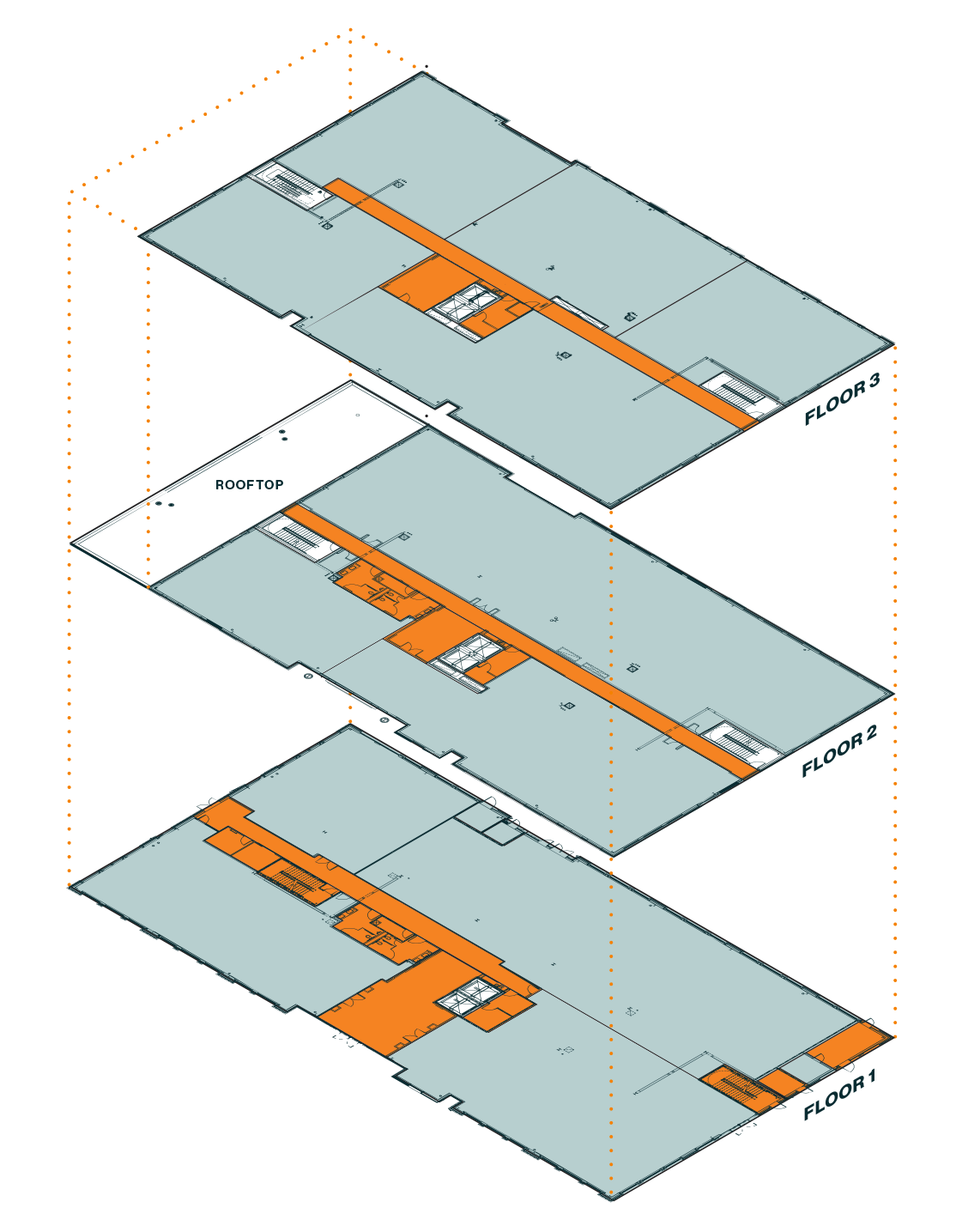
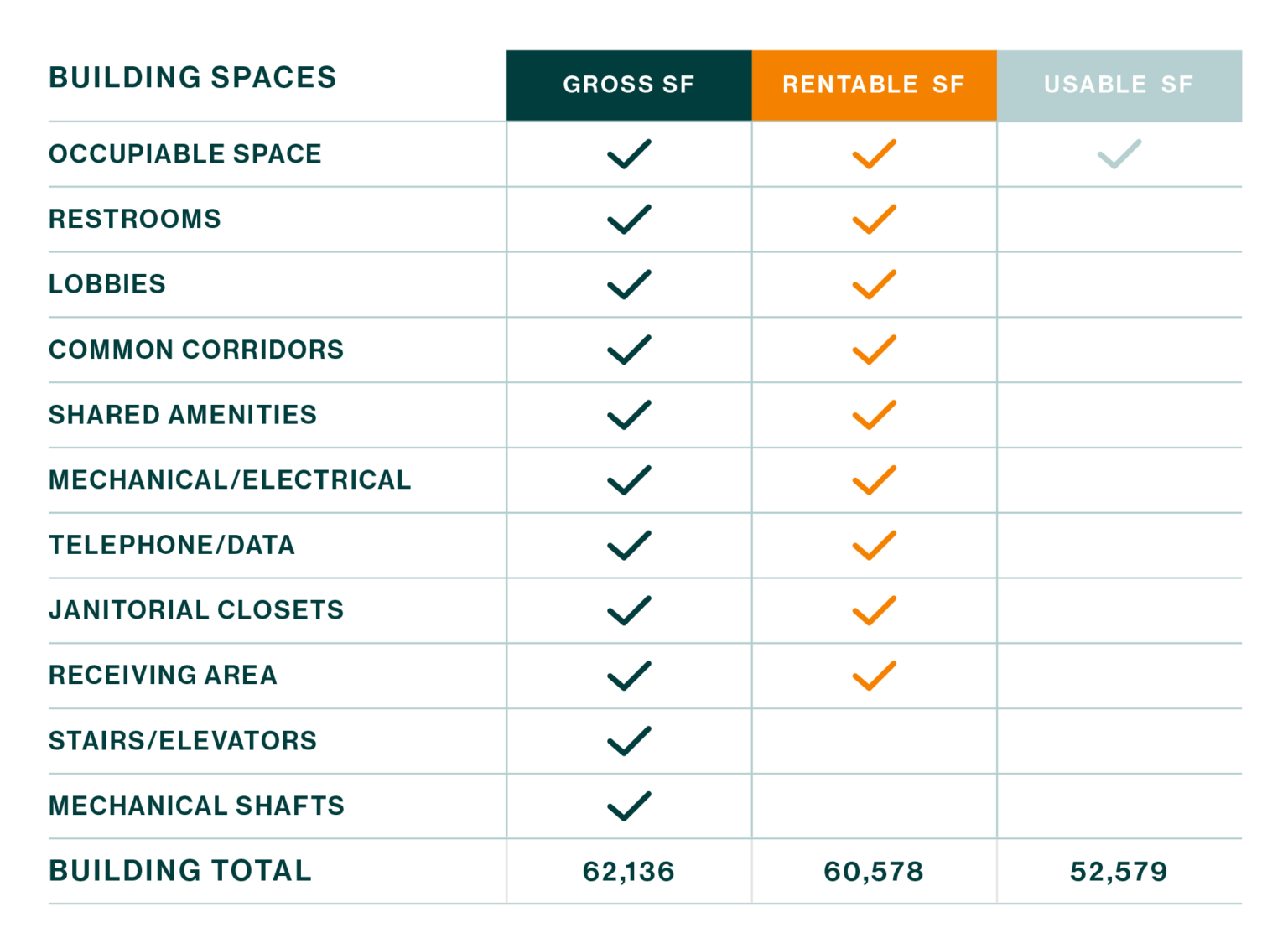
Calculating Common Area Factor
When evaluating real estate options, you’ll want to be aware of the Common Area Factor so you know exactly what you’re paying for. The methods for calculating a building’s Rentable Square Feet, Usable Square Feet, and Common Area Factor are governed by BOMA International. Remedy requires the architect of record on each project to provide these calculations throughout the design process, which are then shared with the client.
The Common Area Factor is calculated by dividing the building’s total Rentable Square Feet by the building’s total Usable Square Feet. The result is then converted into a percentage and applied to the tenant’s Usable Square Footage.
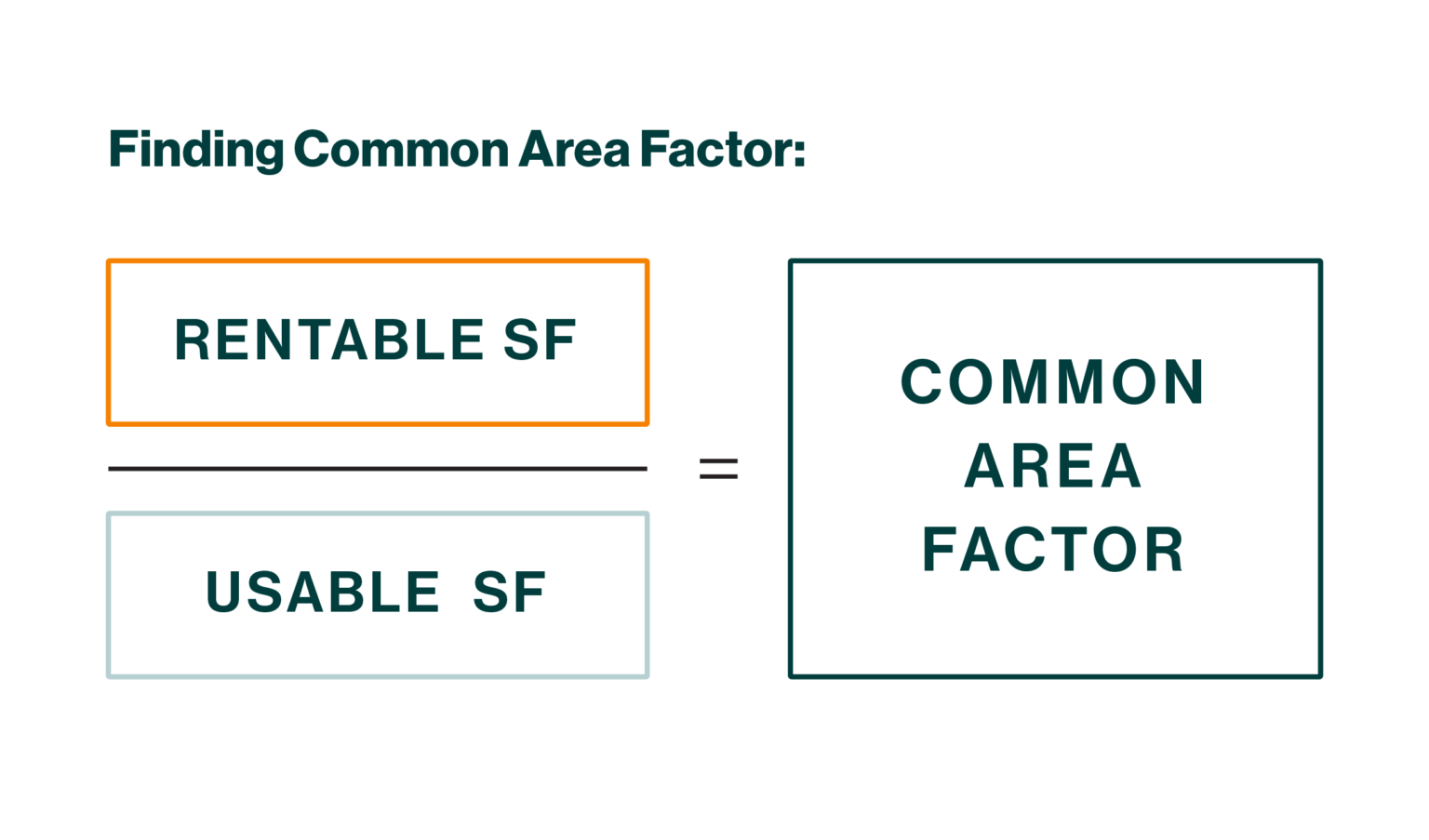
Using this calculation, we can figure out the Common Area Factor for our hypothetical medical office building.
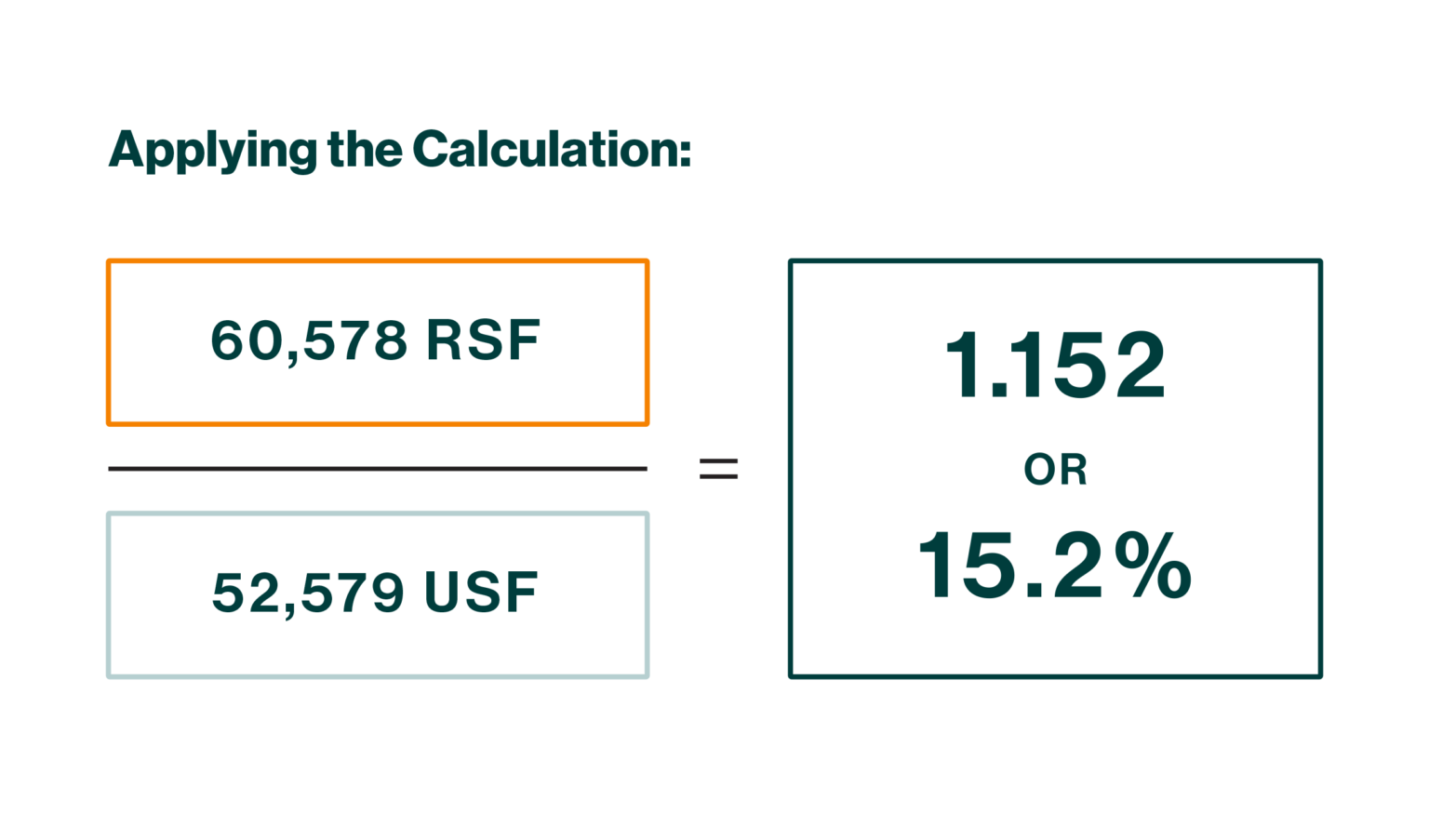
Remedy aims for a Common Area Factor under 17% in its medical office buildings to keep rents reasonable. To achieve this, we facilitate a very structured design process in which our pre-construction experts oversee the conceptual design of the building floor plans and common area layouts. As the design advances, BOMA calculations are updated and refinements to the layout are made to achieve the desired Common Area Factor.
Rent Savings
Our hypothetical medical office building has been designed efficiently with a Common Area Factor of 15.2%. But what if this same building was designed with larger common areas resulting in a Common Area Factor of 18.7%?
While a 3.5% difference in the Common Area Factor may seem trivial, over a 10- to 15-year lease term the total cost savings can be significant. Let’s say you decide to lease a suite on floor 2 of our medical office building and your occupiable space is 10,000 Usable Square Feet.
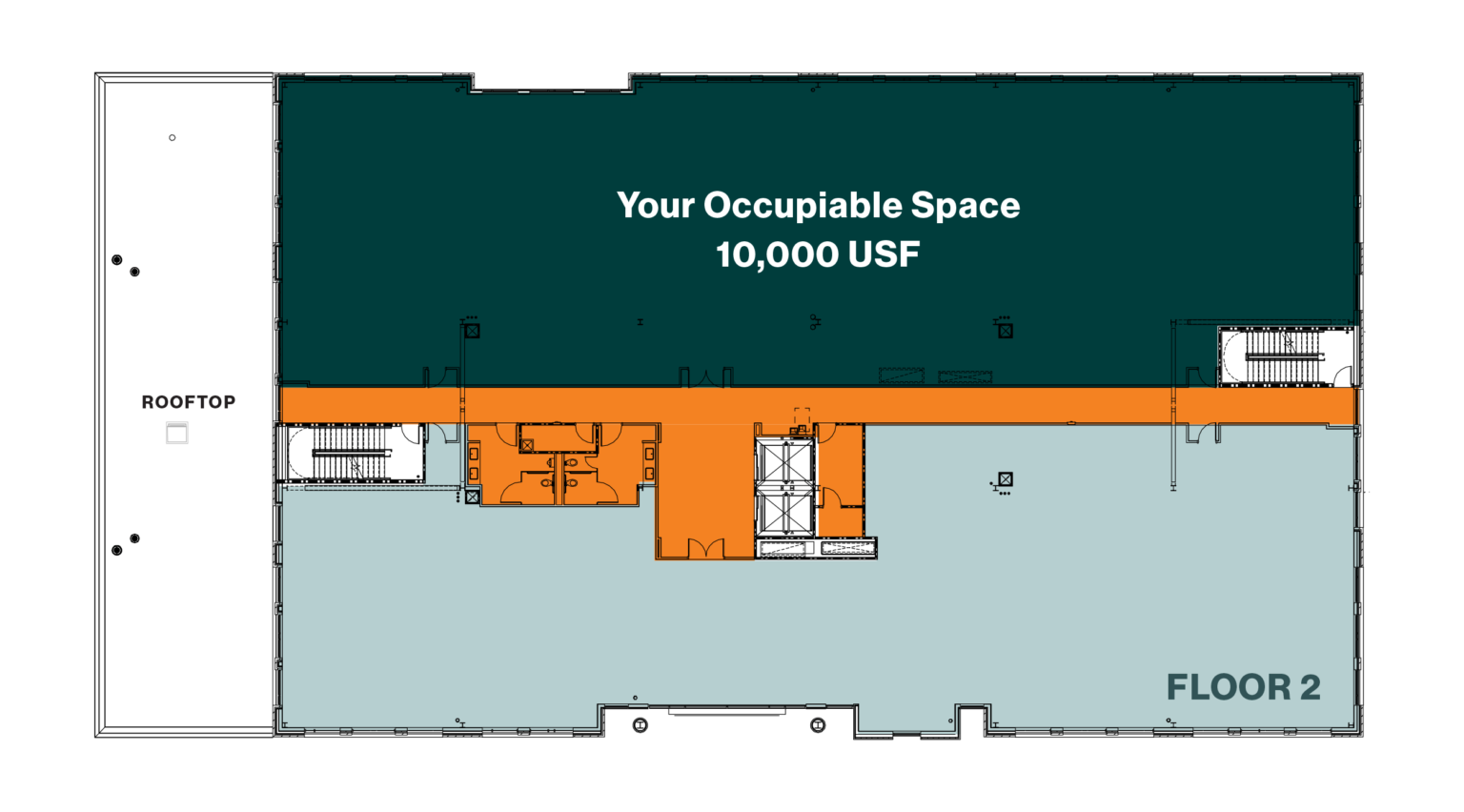
With a 15.2% Common Area Factor, your Rentable Square Feet would be 11,520 (10,000 USF X 1.152). With an 18.7% Common Area Factor, your Rentable Square Feet would be 11,870 (10,000 USF X 1.187).
Using a hypothetical $25/RSF NNN rental rate, your 10,000 USF suite would cost $288,000 ($25 X 11,520 RSF) per year in the building with optimized common areas. This same amount of occupiable space would cost $296,750 ($25 X 11,870 RSF) per year in the building with larger common areas. Over the course of a 12-year lease, you would save a total of $105,000.
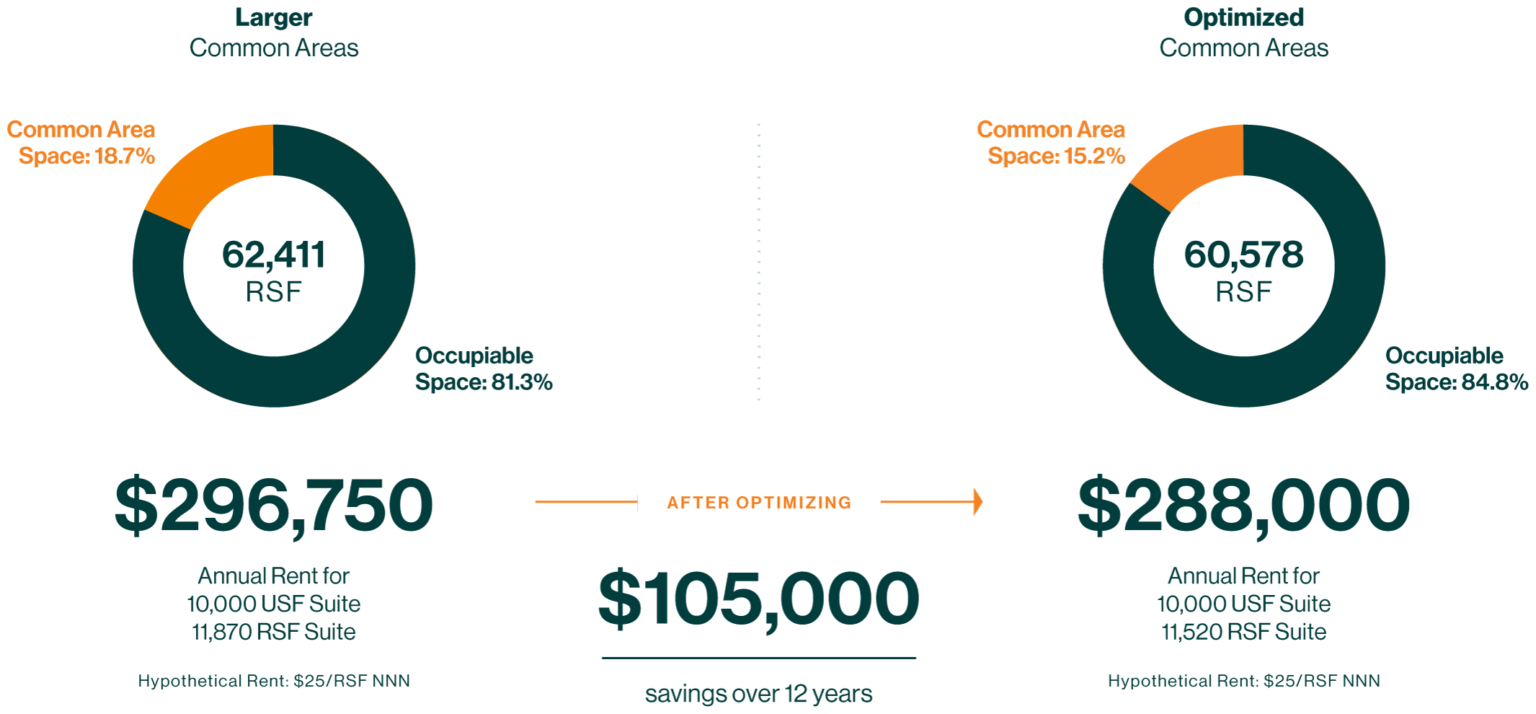
While Remedy strives to deliver efficient buildings by driving down the Common Area Factor, we recognize there are instances where increasing common areas to incorporate certain shared amenities may be a high priority for our clients.
For example, the boutique UCHealth Grandview Hospital we developed in north Colorado Springs was designed with a two-story atrium lobby, grand staircase, cafeteria, and children’s play area to achieve the health system’s patient experience/healthcare consumerism objectives for that particular submarket. At Remedy, we analyze the impacts of common area design and provide our clients with the data needed to make informed decisions that balance building economics with desired amenities.
4 Ways to Reduce Common Area Space
Now let’s take a look at specific ways to reduce common area space using real-world examples from Remedy’s development portfolio.
1. Choose Simple Shapes for Building Design
Flourishes like rounded façades or irregular floor plates can create inefficient space and cause interior planning challenges. Remedy favors simple geometric shapes whenever possible within the constraints of the building site. A rectilinear design makes interior spaces easier to plan and maximizes usable space.
On a recent on-campus development project, we revised the design to transform a convex building footprint into a rectilinear one, which increased the usable space by 10.3% and reduced the Common Area Factor from 18.4% to 14.7%.
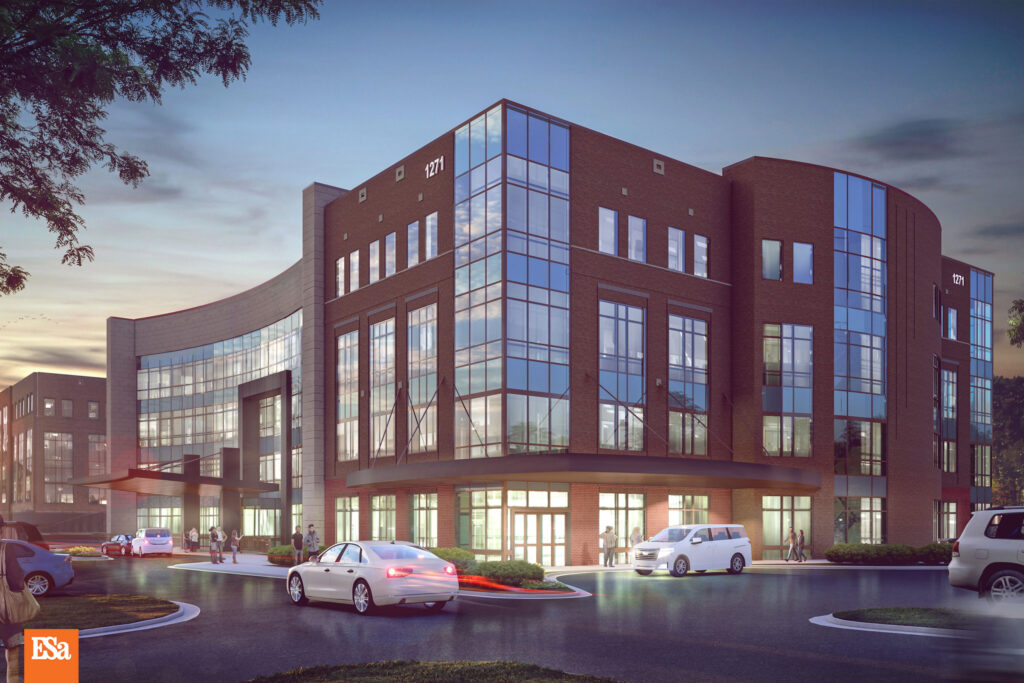
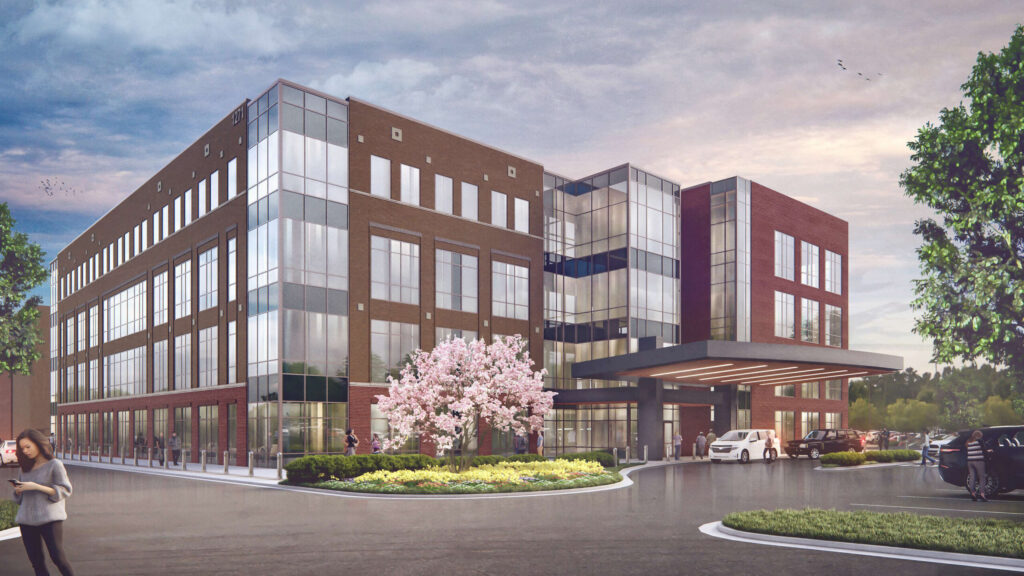
2. Reconsider Grand Lobbies and Monumental Stairs
“One of the easiest targets for greater efficiency is the building lobby,” says Kurt Meyer, senior pre-construction manager with Remedy. “A grand lobby can be beautiful and inspiring, and there may be reasons to include one, but our role in the design process is to challenge our design teams and clients as to why it’s wanted and whether the budget supports it.”
A multi-story glass atrium means carving a large volume out of the building’s total square footage that isn’t usable space. Furthermore, the additional glass increases heating/cooling loads to the HVAC system, adding additional cost for tenants to absorb. Similarly, the cost of a monumental staircase may contribute to a rental rate beyond what’s acceptable to the market.
“It’s our job to help our clients understand the impact of these architectural features, and try to balance their vision with the most optimal delivery we can.”
Kurt Meyer
Remedy Senior Pre-Construction Manager
In addition to simplifying the shape of the building footprint in the above example, we infilled the voluminous two-story lobby with floor slab and omitted the monumental stairs, which increased the usable area of the floor by 2,000 square feet.
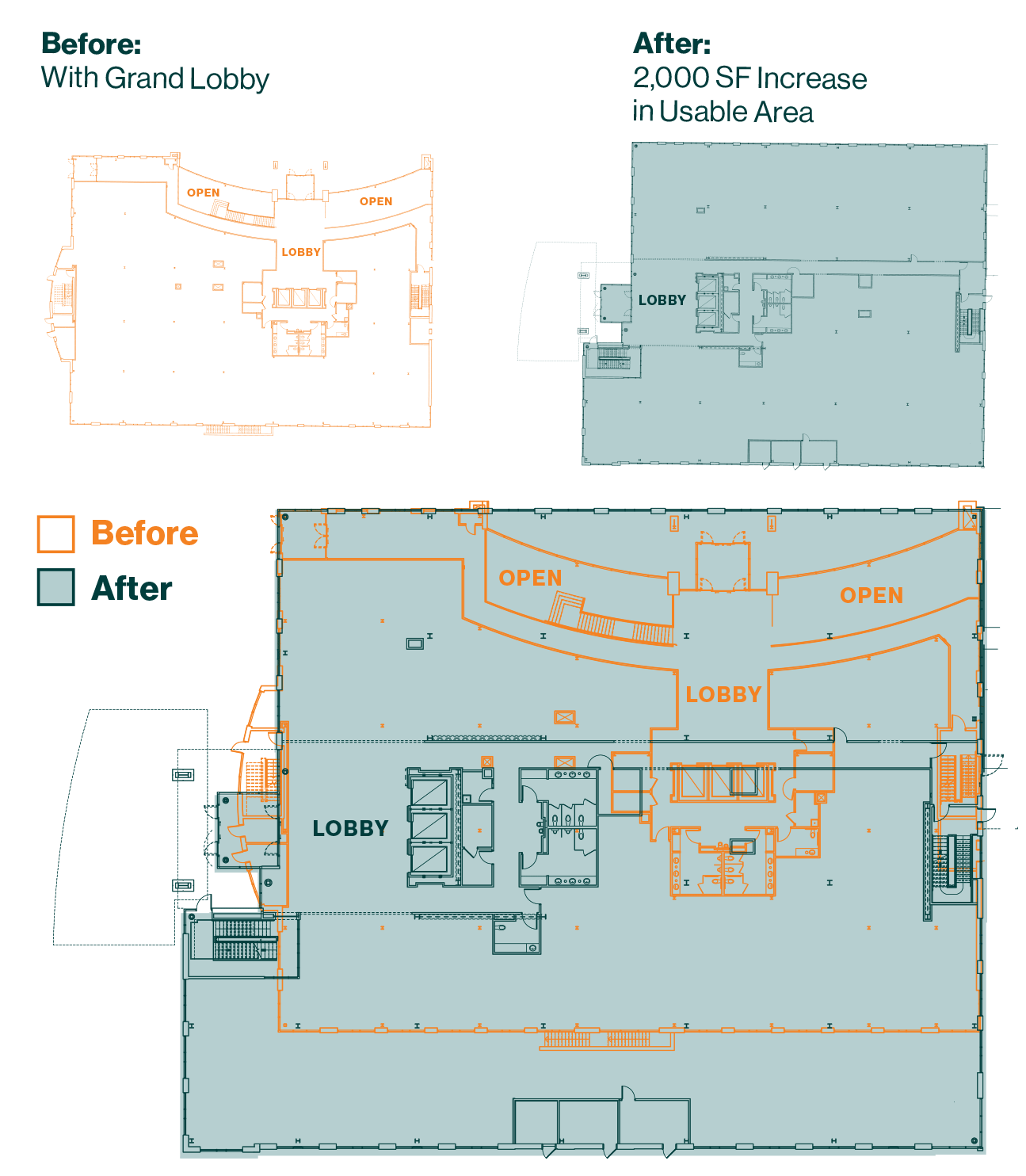
3. Appropriately Size, Configure, and Locate Corridors
Corridors are often overlooked as a space-saving opportunity. Thoughtful design, proper sizing, configuration, and location of corridors can maximize usable space while maintaining adequate circulation and access to all areas of the building.
In another recent Remedy project, the layout of the first floor included a hallway leading from the elevator lobby to a side vestibule. However, the placement of the hallway meant that an orthopedic clinic planned for the first floor wouldn’t be contiguous.
“We reviewed the designs and determined that the corridor wasn’t required for emergency egress, so it was eliminated, resulting not only in a better layout for the orthopedic clinic but also a 1% reduction in the common area factor,” Meyer explains.
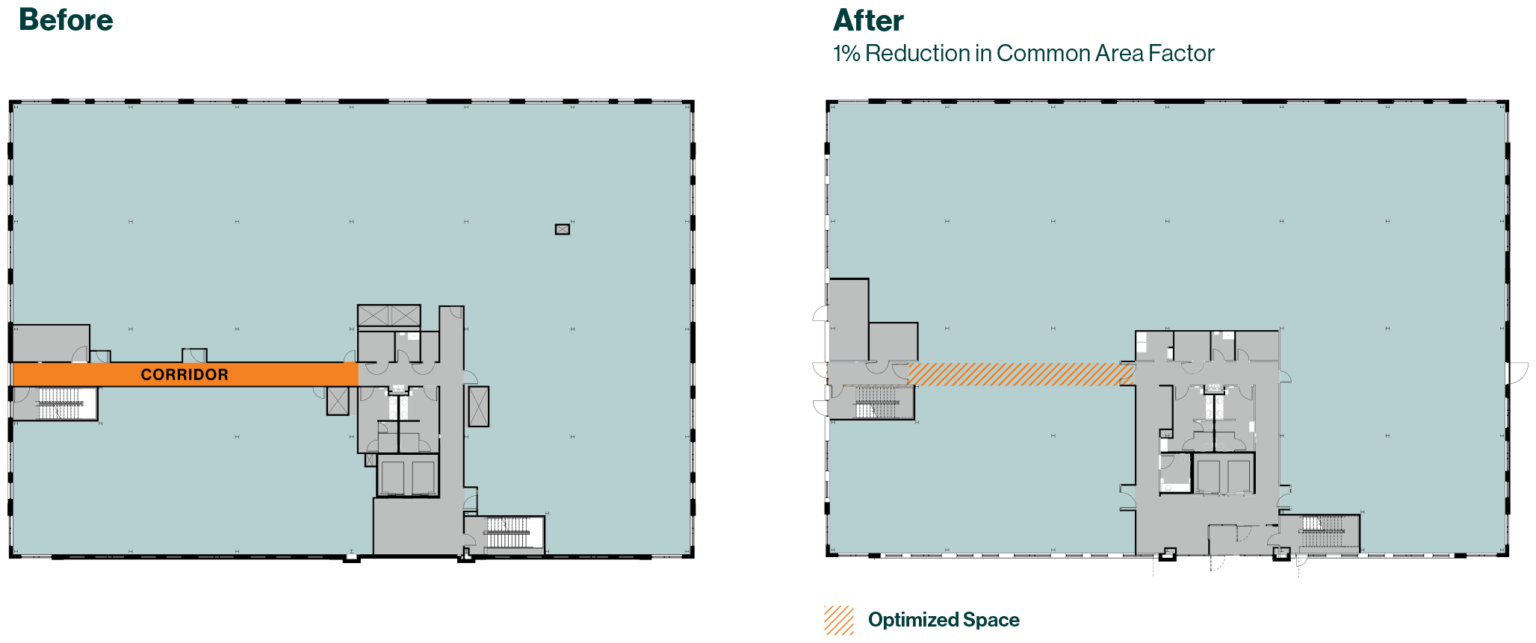
4. Reduce Size or Change Location of Building System Spaces
Lobbies and corridors aren’t the only common areas that contribute to the Common Area Factor—electrical rooms, mechanical rooms, telephone/data rooms, janitorial closets and delivery receiving areas count, too. Even though you may never go into these spaces as a tenant, you’re still paying for them.
While these “behind the scenes” spaces are necessary, Remedy works with the architect and building engineers to minimize excess space while remaining code compliant. If the equipment planned for a 15 ft x 20 ft electrical room can fit into a 12 ft x 15 ft space, that’s a 40% reduction and gives back 120 square feet of usable space. Repeating the exercise with the mechanical rooms, telephone/data rooms, and other utility spaces can result in a significant reduction of the Common Area Factor.
“Mechanical and electrical engineers often insist that their equipment needs lots of space, but we have consistently been able to reduce that footprint and others, saving tenants thousands of dollars over the course of their lease.”
Jim Moylan
Remedy EVP | Design & Construction
“Every little bit helps, and sometimes a creative solution presents itself,” adds Meyer. “On a recent medical office building project, we were able to eliminate a mechanical room and stairwell on the second floor by placing the mechanical equipment on the roof. As a result, the corridor providing access to those areas was also eliminated, reducing our common area by 650 square feet and reducing the Common Area Factor by 2%. Furthermore, we changed an open stair in the lobby into an enclosed stairwell and reconfigured the restrooms and other service rooms, which greatly improved the efficiency and circulation of the floor plan.”
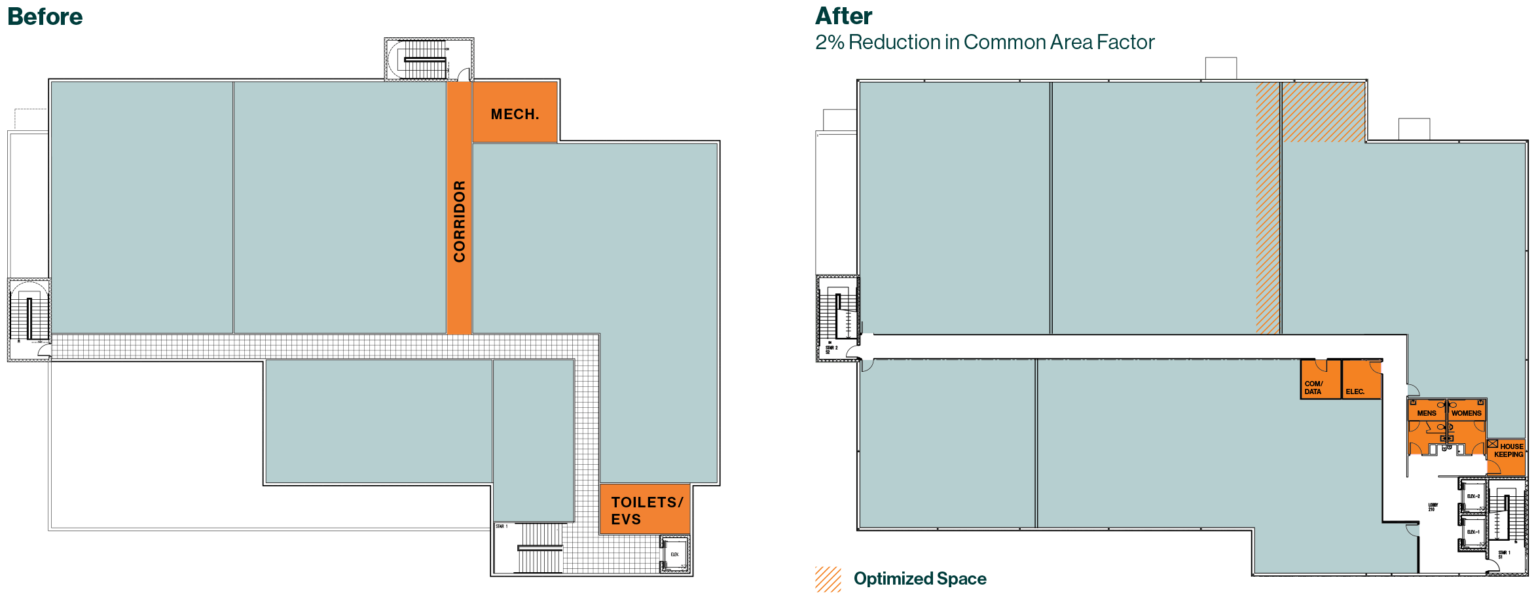
Gaining Efficiency in Existing Buildings
So we’ve delved into efficiency strategies for new construction. You may wonder how this can apply to existing buildings where everything is already set in place. Depending on the size and shape of your tenancy, there may still be opportunities to reconfigure corridors and other common areas to eliminate excess space. However, it wouldn’t be practical to change the overall shape of a building or fill in a grand lobby. Fortunately, Remedy’s market rates in its existing portfolio of properties are determined by taking all characteristics of a building into account, which is more than just age and location. It reflects the efficiency and all the amenities and services that come standard with a Remedy property.
Talk with Us
If you’re exploring the development of a new medical office building, whether it’s multi-tenant or build-to-suit, Remedy is here to help. Get in touch to learn more about our flexible approach to healthcare real estate.
